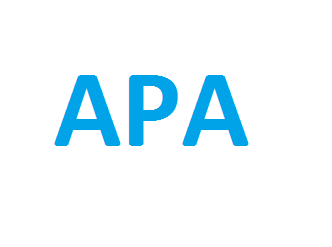
The Academic Perspective Procedia publishes Academic Platform symposiums papers as three volumes in a year. DOI number is given to all of our papers.
Publisher : Academic Perspective
Journal DOI : 10.33793/acperpro
Journal eISSN : 2667-5862
Design and Analysis of A Microwave Dual Band Microstrip Patch Antenna (MPA) for Wireless Communication Applications
Abdurrahim Erat
1154
615
Abstract
This paper presents the design and simulation of a microstrip patch antenna (MPA) which is modeled by placing several rectangular copper layer with conductive characteristics on a substrate material with dielectric constant 3.0 and 22x18x1 mm3 geometry. This microstrip path was designed with copper material which had a very thin thickness for patch and ground. In this study, a change in resonance frequency and return loss characteristics were observed for several substrate thickness values. The radiation characteristics of the single and dual band microstrip patch antennas (MPAs) are analysed in the frequency range of 5 – 25 GHz. The microstrip patch antenna (MPA) radiate at a frequency of 15.32 GHz with -45 dB return loss. For the designed single and dual band MPA design, some electromagnetic properties such as return loss, surface current and radiation patterns were simulated. The characteristic of goods and chattels of the proposed antenna are analyzed by using the software CST Microwave Studio.
Keywords:
Microwave, Wideband, Dual Band, Return Loss, Wireless, Communication
References
[1] J. Xu, M. Zhao, R. Zhang, M. Lei, X. Gao, S. Huang, and K. Bi. “A Wideband F-ShapedMicrostrip Antenna”. Ieee Antennas And Wireless Propagatıon Letters. 2017. Vol. 16.
[2] T.Bhattacharjee, H. Jiangand N. Behdad.” A Fluidically Tunable, Dual-Band Patch AntennaWith Closely Spaced Bands of Operation”. Ieee Antennas And Wıreless Propagatıon Letters.2016. Vol. 15.
[3] H. Kim, H. Wi, S. Wang, and J. Kim. “Broadband 3 dB microstip hybrid coupler with lowdielectric substrate for X-band applications,” in Proc. IEEE Wireless Microw. Technol. Conf.2016. pp. 1–3.
[4] R. Saha, S. Maity, and N. Trigunayat. “Enhancement of gain, bandwidth and directivity of apatch antenna by increasing dielectric layers of the substrate through micromachining techniquefor RFID application”, in Proc. Int. Conf. Adv. Comput. Eng. Appl. 2015. pp. 321–324.
[5] L. Xing, Y. Huang, Q. Xu, and S. Alja’Afreh. “A wideband hybrid water antenna with an Fshaped monopole,” IEEE Access. 2015. vol. 3, pp. 1179–1187.
[6] N. M. Awad and M. K. Abdelazeez. “Multislot microstrip antenna for ultra-wide bandapplications,” J. King Saud Univ.—Eng. Sci., doi: 10.1016/j.jksues.2015.12.003
[7] Y. Li and J. Wang. ”Dual-Band Leaky-Wave Antenna Based on Dual- Mode CompositeMicrostrip Line for Microwave and Millimeter-Wave Applications”. Ieee Transactıons OnAntennas And Propagatıon. , 2018. Vol. 66, No. 4
[8] C. Deng , X. Lv, and Z. Feng. “Wideband Dual-Mode Patch Antenna With Compact CPWFeeding Network for Pattern Diversity Application”. Ieee Transactıons On Antennas AndPropagatıon. 2018. Vol. 66, No. 5.
[9] J. Chen, K. Tong, A. Armaghany, and J. Wang. “A Dual-Band Dual-Polarization Slot PatchAntenna for GPS and Wi-Fi Applications”. Ieee Antennas And Wıreless Propagatıon Letters.2016. Vol. 15.
Cite
-
 %0 Academic Perspective Procedia (ACPERPRO) Design and Analysis of A Microwave Dual Band Microstrip Patch Antenna (MPA) for Wireless Communication Applications% A Abdurrahim Erat% T Design and Analysis of A Microwave Dual Band Microstrip Patch Antenna (MPA) for Wireless Communication Applications% D 11/22/2019% J Academic Perspective Procedia (ACPERPRO)% P 711-719% V 2% N 3% R doi: 10.33793/acperpro.02.03.78% U 10.33793/acperpro.02.03.78
%0 Academic Perspective Procedia (ACPERPRO) Design and Analysis of A Microwave Dual Band Microstrip Patch Antenna (MPA) for Wireless Communication Applications% A Abdurrahim Erat% T Design and Analysis of A Microwave Dual Band Microstrip Patch Antenna (MPA) for Wireless Communication Applications% D 11/22/2019% J Academic Perspective Procedia (ACPERPRO)% P 711-719% V 2% N 3% R doi: 10.33793/acperpro.02.03.78% U 10.33793/acperpro.02.03.78
© Academic Perspective 2018. All rights reserved.




